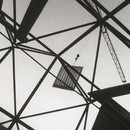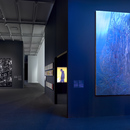Biography
One of the most renowned architects of the contemporary era, Renzo Piano was born in Genoa in 1937 into a family of builders. He obtained his secondary school diploma in classical studies and then earned a degree in Architecture from Milan Polytechnic in 1964.Following his university studies, he gained experience in Philadelphia and London, and the London experience in particular became a determining factor in his professional development, as Jean Prouvé assigned him the role of president of the project commission for the Centre Georges Pompidou.
This was the beginning of what would become a multifaceted international career that has lasted for over half a century, and for which Piano is considered one of the most successful starchitects, "the representative of Italianness in the world following the death of Aldo Rossi" (R. Moneo).
Renzo Piano began his career winning the competition for the design of the Centre Georges Pompidou along with Richard Rogers and Gianfranco Franchini.
The project was chosen from among hundreds of proposals from all over the world, and it is still today revolutionary and highly representative of the high-tech movement.
The collaboration between Piano and Rogers lasted from 1971 to 1977. Subsequently, Piano worked with many other illustrious architects and engineers (Rice, Fitzgerald, Makowsky).
His work encompasses many different sectors: from trade fair pavilions to historical building restoration, and from studies on materials and processes to boat and furniture design.
Unanimously recognized as unique, the Piano’s architecture cannot be traced back to any “school”, current or style. His design idea “does not rest on a theory, but rather on a way of relating to the project”, with a “constant interaction between construction aspects (technological, scientific, production-related) and poetic content.” (Fiocchi)
Nonetheless, four themes can be seen in his professional development: "his interest in the piece, the organism, the building system; design for industry; the problem of housing and cities; the large-scale project." (Treccani)
From the Italian Pavilion at Expo ‘70 in Osaka, to the aforementioned Centre Pompidou in Paris (1977), Piano has produced numerous representative projects, many of which with his firm Renzo Piano Building Workshop (established in Genoa in 1985, later opening offices in Paris and Osaka), bringing together architects, engineers and designers for a shared yet variegated methodological and design approach.
His works include the UNESCO Otranto Urban Regeneration Workshop in Otranto (1978); the Menil Collection in Houston (1983); the Cité Internationale in Lyon (1995); the National Center for Science and Technology in Amsterdam (1997); the Paul Klee Museum in Bern (2005); the Kimbell Art Museum Expansion in Texas (2013); the Whitney Museum of American Art in Lower Manhattan, New York (2015); the Colombia University campus in West Harlem (2016); and the Botín Center in Santander (2017).
He also designed the imposing skyscraper that houses the headquarters of The New York Times (2007) and The Shard tower in London (2012).
Many of his most well-known works are in Italy: the San Nicola Stadium in Bari (1989), the Lingotto Factory Conversion in Turin (1994), the Principe, Darsena, Brin and Dinegro subway stations in Genoa (1983-2003), the Parco della Musica Auditorium in Rome (2002), the Padre Pio Pilgrimage Church in San Giovanni Rotondo (2004), and the Vulcano Buono multiservice center in Nola (2007).
Following the collapse of the Morandi Bridge in Genoa (August 2018), Renzo Piano donated to his native city the design for the new bridge over the Polcevera River, approved at the end of the year, for which Piano will serve as the supervisor.
As he stated in one of his lectures, Piano interprets architecture as "the art of giving shelter to human activities (...), the art of building the city and its spaces, like the streets, the squares, the bridges, the parks. And within the city, the meeting places, those gathering places that give the city its social and cultural function. But naturally, that’s not all. Because architecture is also a vision of the world. Architecture can only be humanistic, because the city with its buildings is a way of seeing, building, and changing the world.”
His most recent projects include the Istanbul Modern Museum (under construction since 2016); the Paris Courthouse, completed in 2018; and the Academy Museum of Motion Pictures in Los Angeles, which is scheduled to open in 2019 and will be the world’s largest museum dedicated to movie-making.
The many awards Piano has received include the Legion d’Onore (1985), the Royal Gold Medal of the Royal Institute of British Architects in London (1989), and the Pritzker Prize (1998).
Also noteworthy is the Renzo Piano Foundation, a non-profit organization set up by the architect in 2004 to promote various activities in the world of architecture.
Piano was also the first Italian to be included on TIME magazine’s famous list of the 100 Most Influential People in the World (2006). He has been a UNESCO ambassador since 2007 and a senator for life since 2013.
A host of exhibitions have been dedicated to Piano, including Out of the Blue in Bonn (1997); Renzo Piano: Architekturen des Lebens at the Neue Nationalgalerie in Berlin (2000); the monograph at the 2007 Milan Triennale on the occasion of the 40 years of activity of the architect and his firm, and the recent Renzo Piano: The Art of Making Buildings at the Royal Academy of Arts in London (2018).
In 2018 the Spanish filmmaker Carlos Saura shot the documentary film Renzo Piano: l'architetto della luce (The Architect of Light).
Renzo Piano selected works and projects
- Academy Museum of Motion Pictures, Los Angeles (USA), 2019
- Tribunale, Parigi (Francia), 2018
- Polo universitario, Amiens (Francia), 2018
- New Toronto Courthouse, Toronto (Canada), 2016 - in corso
- Istanbul Modern Museum, Istanbul (Turchia), 2016 - in corso
- Paddington Square, Londra (Regno Unito), 2015 - in corso
- Whitney Museum of American Art, New York (USA), 2015
- Beirut History Museum, Beirut (Libano), 2015 - in corso
- Torre a Soho, New York (USA), 2014
- Emergency Children’s Surgery Center, Entebbe (Uganda), 2013 - in corso
- Ampliamento del Kimbell Art Museum, Fort Worth, Dallas (USA), 2013
- London Bridge Tower (The Shard), Londra (Regno Unito), 2012
- Astrup Fearnley Museum of Modern Art Oslo (Norvegia), 2012
- California Academy of Sciences, San Francisco (USA), 2008
- New York Times Building, New York (USA), 2007
- Paul Klee Zentrum, Berna (Svizzera), 2005
- Auditorium Parco della Musica, Roma (Italia), 2002
- Cité Internationale, Lione (Francia), 1995
- NEMO, Museo della Scienza e della Tecnica, Amsterdam (Olanda), 1997
- Beyler Foundation Museum, Riehen (Svizzera), 1997
- Aeroporto di Kansai, Osaka (Giappone), 1994
- Ristrutturazione stabilimento Lingotto, Torino (Italia), 1994
- Stazioni della Metropolitana, Genova (Italia), 1994
- Stadio San Nicola, Bari (Italia), 1989
- IBM Travelling Pavillion, Roma (Italia), 1986
- Collezione Menil, Houston, Texas (USA), 1986
- Progetto Laboratorio UNESCO, Otranto (Italia), 1979
- Ampliamento Istituto IRCAM, Parigi (Francia), 1977
- Centro Georges Pompidou, Parigi (Francia), 1977
- Padiglione italiano per l’Esposizione di Osaka (Giappone), 1970
- Padiglioni per la Triennale di Milano (Italia), 1966
Official website
www.rpbw.com
Related Articles: Renzo Piano
Related Articles










